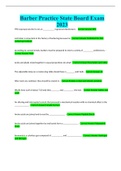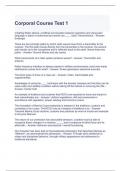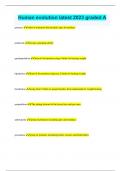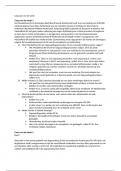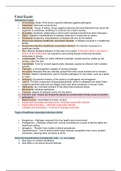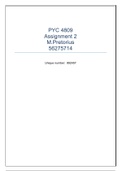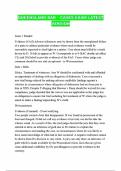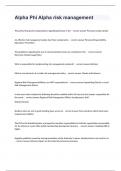Atoms and the periodic table
Q1.
Figure 5 shows the changes of state for gallium and the arrangement of particles in liquid gallium.
-
0 O
g g
(i) Complete the boxes for solid gallium and gaseous gallium by drawing the
arrangement of the particles in each of these physical states.
(2)
(ii) Give the name of the change of state labelled Y in Figure 5.
(1)
condensing
...........................................................
(Total for question = 3 marks)
Q2.
The freezing point of water is 0°C.
Describe how the movement and arrangement of water particles changes when water is cooled from
10°C to –10°C.
(2)
At 10, the particles are liquid and moving around each other slowly, at - 10, the particles are packed
.............................................................................................................................................
together and vibrating e
.............................................................................................................................................
.............................................................................................................................................
.............................................................................................................................................
,Q3.
i
Figure 2 shows the melting points and boiling points of four substances, W, X, Y and Z.
" -
i
¥
Using the information in Figure 2
(i) give the letter of the substance that is a solid at 20 °C
(1)
÷
...........................................................
(ii) give the letter of a substance that is a liquid at 50 °C
(1)
...........................................................
Q4.
An atom of phosphorus contains 15 electrons.
Describe how these 15 electrons are arranged in a phosphorus atom.
(2)
In
Phqphorons
..............................................................................................................................................
..............................................................................................................................................
..............................................................................................................................................
..............................................................................................................................................
Q5.
Argon is in group 0 of the periodic table.
Identify, using the periodic table on the back cover of this paper, which of these elements is in the same
period as argon.
(1)
A bromine
B iron
¥ C
D
magnesium
xenon
, Q6.
Each element has an atomic number.
(i) State what is meant by atomic number.
(1)
the number og
protons
..............................................................................................................................................
..............................................................................................................................................
(ii) The atomic number of boron is 5.
Boron exists as two isotopes boron-10 and boron-11.
Use this information to explain why boron-10 and boron-11 are isotopes.
(2)
..............................................................................................................................................
..............................................................................................................................................
..............................................................................................................................................
..............................................................................................................................................
Q7.
.
(a) Complete the table to show the relative mass of a neutron and of an electron.
(2)
I
(b) Complete the sentence by putting a cross ( ) in the box next to your answer.
An atom has no overall charge because it contains
(1)
A more protons than electrons
B the same number of electrons and protons
C the same number of electrons and neutrons
D more neutrons than electrons
(c) The atomic number of lithium is 3.
The mass number of an atom of lithium is 7.
State the name and number of each of the particles in the nucleus of this atom.
(2)
.............................................................................................................................................
.............................................................................................................................................
.............................................................................................................................................
Q1.
Figure 5 shows the changes of state for gallium and the arrangement of particles in liquid gallium.
-
0 O
g g
(i) Complete the boxes for solid gallium and gaseous gallium by drawing the
arrangement of the particles in each of these physical states.
(2)
(ii) Give the name of the change of state labelled Y in Figure 5.
(1)
condensing
...........................................................
(Total for question = 3 marks)
Q2.
The freezing point of water is 0°C.
Describe how the movement and arrangement of water particles changes when water is cooled from
10°C to –10°C.
(2)
At 10, the particles are liquid and moving around each other slowly, at - 10, the particles are packed
.............................................................................................................................................
together and vibrating e
.............................................................................................................................................
.............................................................................................................................................
.............................................................................................................................................
,Q3.
i
Figure 2 shows the melting points and boiling points of four substances, W, X, Y and Z.
" -
i
¥
Using the information in Figure 2
(i) give the letter of the substance that is a solid at 20 °C
(1)
÷
...........................................................
(ii) give the letter of a substance that is a liquid at 50 °C
(1)
...........................................................
Q4.
An atom of phosphorus contains 15 electrons.
Describe how these 15 electrons are arranged in a phosphorus atom.
(2)
In
Phqphorons
..............................................................................................................................................
..............................................................................................................................................
..............................................................................................................................................
..............................................................................................................................................
Q5.
Argon is in group 0 of the periodic table.
Identify, using the periodic table on the back cover of this paper, which of these elements is in the same
period as argon.
(1)
A bromine
B iron
¥ C
D
magnesium
xenon
, Q6.
Each element has an atomic number.
(i) State what is meant by atomic number.
(1)
the number og
protons
..............................................................................................................................................
..............................................................................................................................................
(ii) The atomic number of boron is 5.
Boron exists as two isotopes boron-10 and boron-11.
Use this information to explain why boron-10 and boron-11 are isotopes.
(2)
..............................................................................................................................................
..............................................................................................................................................
..............................................................................................................................................
..............................................................................................................................................
Q7.
.
(a) Complete the table to show the relative mass of a neutron and of an electron.
(2)
I
(b) Complete the sentence by putting a cross ( ) in the box next to your answer.
An atom has no overall charge because it contains
(1)
A more protons than electrons
B the same number of electrons and protons
C the same number of electrons and neutrons
D more neutrons than electrons
(c) The atomic number of lithium is 3.
The mass number of an atom of lithium is 7.
State the name and number of each of the particles in the nucleus of this atom.
(2)
.............................................................................................................................................
.............................................................................................................................................
.............................................................................................................................................

